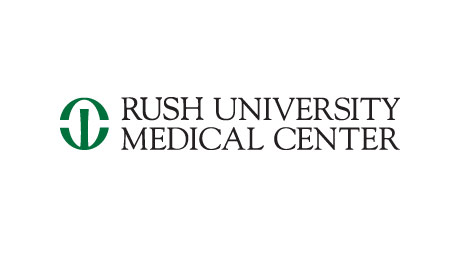Safety and Effectiveness of the Adherus Dural Sealant System When Used as a Dural Sealant in Cranial Procedures
| Status: | Completed |
|---|---|
| Conditions: | Neurology |
| Therapuetic Areas: | Neurology |
| Healthy: | No |
| Age Range: | Any |
| Updated: | 9/23/2012 |
| Start Date: | June 2010 |
| End Date: | January 2013 |
| Contact: | Jeffrey G Clark |
| Email: | jeffc@hyperbranch.com |
| Phone: | 919-433-3327 |
A Pivotal Clinical Trial Examining the Safety and Effectiveness of the Adherus Dural Sealant System When Used as a Dural Sealant in Cranial Procedures
The purpose of the study is to demonstrate the safety and effectiveness of the Adherus Dural
Sealant System when used as a dural sealant in conjunction with standard methods of dural
repair in cranial procedures.
After surgery on the head, the dura, a membrane that covers the brain, must be closed in
order to prevent CSF from leaking outside of the dura. When CSF leaks outside the dura,
this can increase the risk of infection, cause painful headaches or complications that may
require another surgery to repair the leak. Typically, your study doctor will close the
dura with sutures (surgical stitches) and sometimes a piece of muscle, fat, or other soft
tissue taken from another place on your body. However, it is still possible that CSF will
continue to leak through small suture holes even when all appropriate precautions have been
taken.
Dural surgical sealants have been developed to assist surgeons in stopping CSF leaks when
standard measures following brain surgery are not effective. Sometimes, the leak seals on
its own and there is no need for a surgical sealant.
This study is for participants who have a CSF leak after standard measures are used to close
the dura at the end of their surgery. The decision to use a surgical sealant will be made
when your surgeon finds that after stitching and using standard measures to close the dura,
there is still a leak.
However, if your surgeon finds a CSF leak after he or she applies the standard stitches and
tissues, and you have signed this informed consent, then you will be randomized to receive
one of two surgical sealants (Randomized means like a flip of the coin). You will be
selected to receive either Adherus™ Surgical Sealant or DuraSeal™ Surgical Sealant and your
post surgery progress will be evaluated during study visits and with study tests. Adherus™
Surgical Sealant is an investigational device that has been developed to stop CSF leaks. It
is being studied to find if it is just as effective and safe as DuraSeal™.
Adherus™ is made of two components that form a gel when they are combined. The gel is
applied after the study doctor closes the incision. The gel acts as a thin, elastic barrier
intended to prevent CSF from leaking until the dura tissue has properly healed on its own.
The gel is then absorbed by the body over several months and excreted or removed from the
body through the urine. This is the second study of Adherus™ in people in the United
States.
If you choose to participate, you will have screening tests to see if you qualify to enroll
in the study. Not everyone who is screened for the study will be able to participate. The
device you receive will be determined by a random selection process. Neither you nor study
personnel or your doctor can decide which device you receive. You will not be told which
device you received until study completion. In addition, if your study doctor does not use
any sealant at the end of your surgery (you may not have any CSF leak or the study doctor
decides to use another closure procedure) then your study participation will be complete.
If you choose to participate and have screening tests to qualify you to enroll in the study,
your surgery will be performed according to the regular standard of care. If CSF leaks from
your dura after it is stitched closed by your study doctor and you continue to meet study
entry measures, then your study doctor will apply the assigned study treatment to try to
stop the leak. After the surgery, you will be seen 4 times over the next 4 months. You will
be in the study for up to 5 months.
Inclusion Criteria:
- Pre-Operative Inclusion Criteria
- Subject is scheduled for an elective cranial procedure involving a dural incision
using any of the following surgical locations/approaches (or combination): frontal,
temporal, occipital, and parietal (i.e. supratentorial), and/or midline or lateral
suboccipital (i.e. infratentorial.) Subject requires a procedure involving a Class
1/clean wound (uninfected surgical wound in which no inflammation is encountered)
Intra-Operative Inclusion Criteria
- Subject's linear extent of durotomy is ≥2 cm
- Subject's dural margins from the edges of bony defect are ≥3 mm throughout
- Subject's CSF leak is present intra-operatively following completion of primary dural
closure (with or without non-autologous duraplasty or autologous tissue), either
spontaneously or upon Valsalva maneuver, at up to 20 cm H2O for up to five (5)
seconds
Exclusion Criteria:
- Subject requires a procedure involving a translabyrinthine, transsphenoidal,
transoral approach, or any procedure that penetrates the air sinus or mastoid air
cells. Note: Superficial penetration of mastoid air cells is not an exclusion if
cells are appropriately sealed (e.g. bone wax).
- Subject has a CSF shunt such as; ventriculo-peritoneal, ventriculo-pleural,
ventriculo-atrial or lumbo-peritoneal shunts.
- Subject has an external ventricular or lumbar CSF drain that must be left in place
after surgery.
- Subject has had radiation treatment to the surgical site, or standard fractionated
radiation therapy is planned within ten days post index-procedure. (Note:
stereotactic radiosurgery prior to the planned index procedure is not an exclusion
criterion).
- Subject has a systemic infection or evidence of any infection near planned operative
site.
Intra-Operative Exclusion Criteria
- Subject has an Incidental finding that meets any pre-operative exclusion criterion
listed above.
- Subject requires the intra-operative placement of a CSF diversion device (e.g.
ventricular catheter, subdural catheter, lumbar drain, or other device designed to
externally evacuate CSF) that will be left in place after the procedure. Note:
Subgaleal drains used for acute post-operative management of the incision site are
permitted.
We found this trial at
17
sites
Click here to add this to my saved trials
Northwestern University Northwestern is recognized both nationally and internationally for the quality of its educational...
Click here to add this to my saved trials
Wayne State University Founded in 1868, Wayne State University is a nationally recognized metropolitan research...
Click here to add this to my saved trials
Click here to add this to my saved trials
Click here to add this to my saved trials
University of South Florida The University of South Florida is a high-impact, global research university...
Click here to add this to my saved trials
University of Virginia The University of Virginia is distinctive among institutions of higher education. Founded...
Click here to add this to my saved trials
Rush University Medical Center Rush University Medical Center encompasses a 664-bed hospital serving adults and...
Click here to add this to my saved trials
Click here to add this to my saved trials
Click here to add this to my saved trials
Click here to add this to my saved trials
West Virginia University West Virginia University, founded in 1867, has a long and rich history...
Click here to add this to my saved trials
Florida Hospital Florida Hospital is one of the country
Click here to add this to my saved trials
Saint Louis University Saint Louis University is a Catholic, Jesuit institution with campuses in St....
Click here to add this to my saved trials
Stony Brook University Medical Center Stony Brook Medicine expresses our shared mission of research, clinical...
Click here to add this to my saved trials
Click here to add this to my saved trials
Click here to add this to my saved trials










